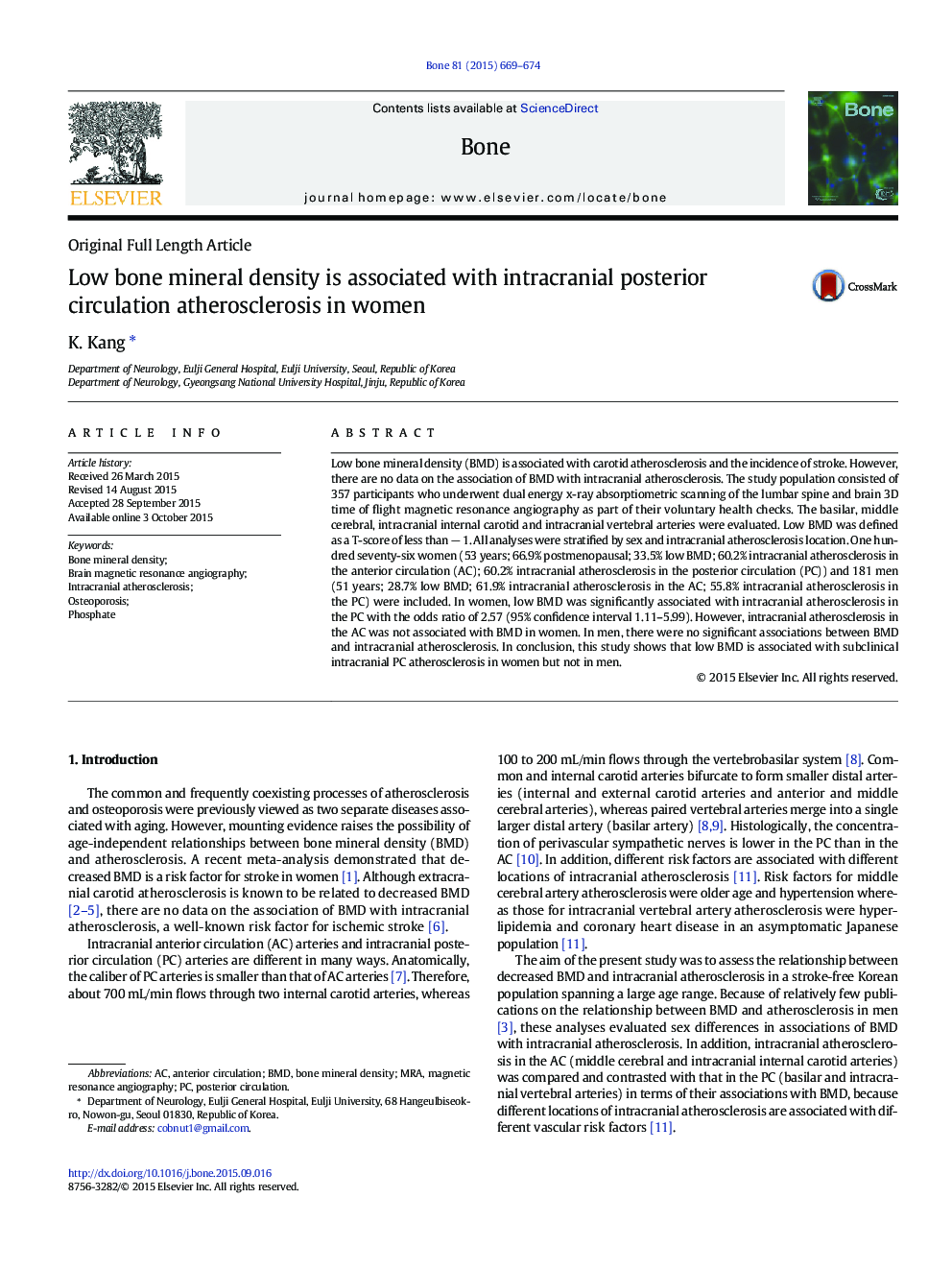| Article ID | Journal | Published Year | Pages | File Type |
|---|---|---|---|---|
| 5889365 | Bone | 2015 | 6 Pages |
â¢The 357 stroke-free subjects underwent brain magnetic resonance angiography.â¢Low bone mass was related to intracranial posterior circulation atherosclerosis in women but not in men.â¢Low bone mass was not associated with intracranial anterior circulation atherosclerosis.
Low bone mineral density (BMD) is associated with carotid atherosclerosis and the incidence of stroke. However, there are no data on the association of BMD with intracranial atherosclerosis. The study population consisted of 357 participants who underwent dual energy x-ray absorptiometric scanning of the lumbar spine and brain 3D time of flight magnetic resonance angiography as part of their voluntary health checks. The basilar, middle cerebral, intracranial internal carotid and intracranial vertebral arteries were evaluated. Low BMD was defined as a T-score of less than â 1. All analyses were stratified by sex and intracranial atherosclerosis location. One hundred seventy-six women (53 years; 66.9% postmenopausal; 33.5% low BMD; 60.2% intracranial atherosclerosis in the anterior circulation (AC); 60.2% intracranial atherosclerosis in the posterior circulation (PC)) and 181 men (51 years; 28.7% low BMD; 61.9% intracranial atherosclerosis in the AC; 55.8% intracranial atherosclerosis in the PC) were included. In women, low BMD was significantly associated with intracranial atherosclerosis in the PC with the odds ratio of 2.57 (95% confidence interval 1.11-5.99). However, intracranial atherosclerosis in the AC was not associated with BMD in women. In men, there were no significant associations between BMD and intracranial atherosclerosis. In conclusion, this study shows that low BMD is associated with subclinical intracranial PC atherosclerosis in women but not in men.
